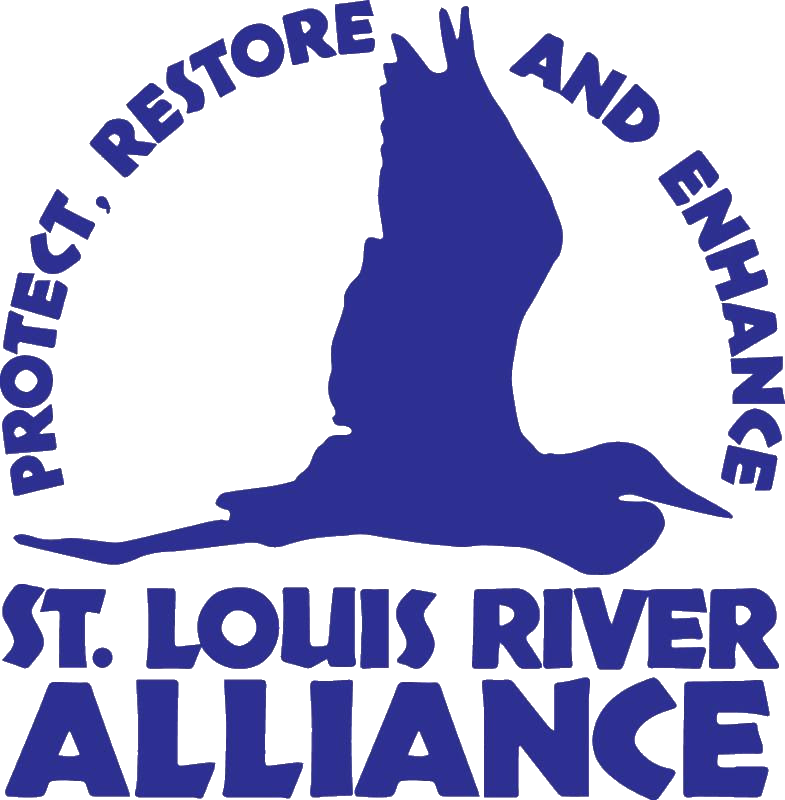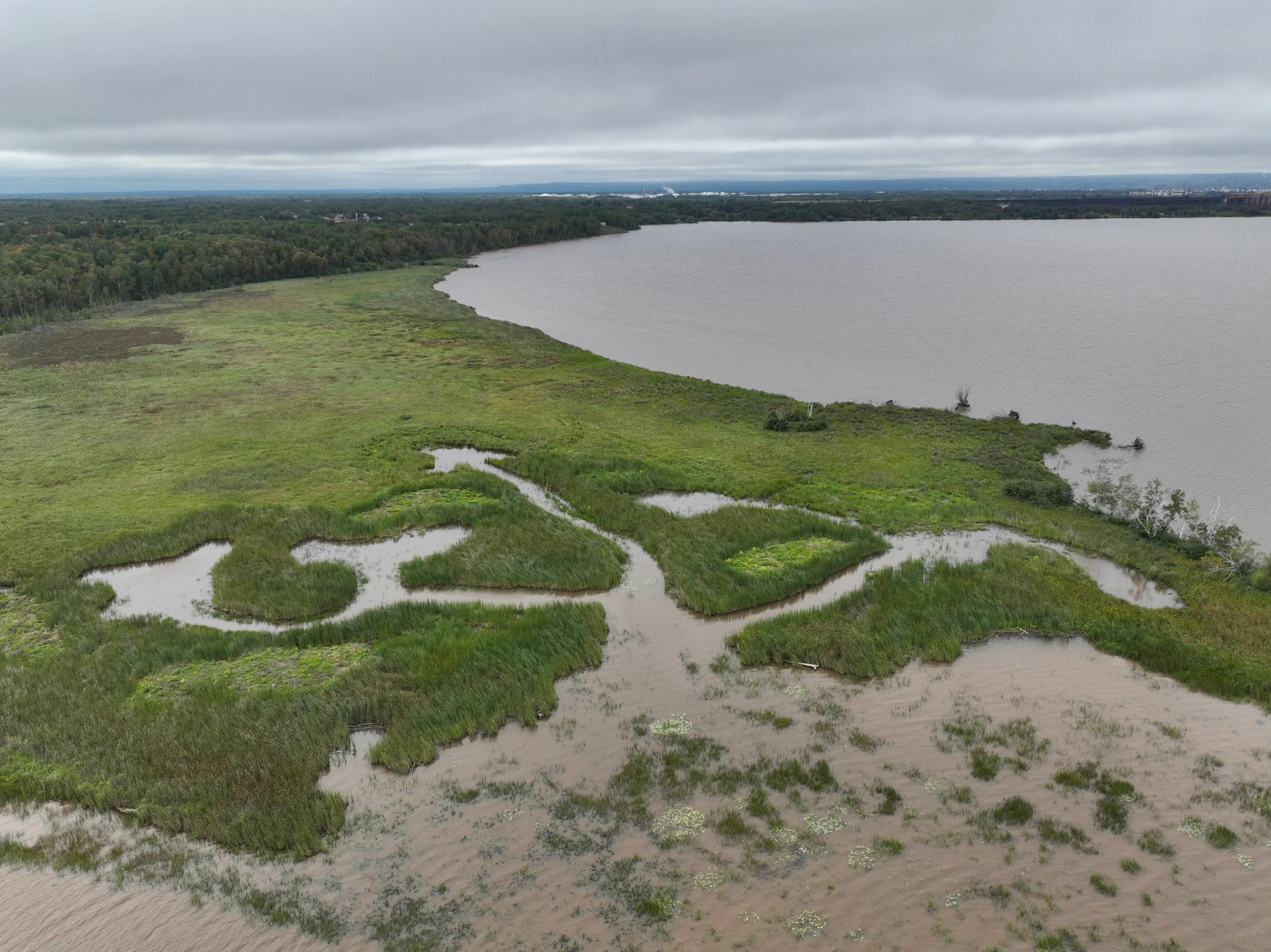Allouez Bay Marsh Bird Habitat Restoration (Phase 1): 2025 Field Season Update
Update provided by Tom Presby, Project Manager, Audubon Great Lakes
Phase 1 of the Allouez Bay Marsh Bird Habitat Restoration project was constructed in 2024 to improve wetland habitat in Allouez Bay and support the marsh birds that depend on it. (For more project background, see the project page.) Marsh birds prefer wetlands that include with a mix of tall native vegetation and small pockets of open water. To create these conditions, the 2024 work focused on carving out patchy networks of channels and pools while also mowing invasive narrowleaf cattail that has been encroaching on high-quality wetland areas.
Drone imagery of the Allouez Bay Marsh Bird Habitat Restoration Project (Phase 1) where mechanical mowing removed portions of invasive narrow leaf cattail to carve out patchy networks of channels and pools preferred by marsh birds. Credit: GEI Consultants.
2025 Monitoring & Maintenance
Following the 2024 restoration work, the 2025 field season focused on monitoring how the wetland responded and completing targeted follow-up maintenance. Vegetation monitoring compared current plant communities to pre-restoration conditions using both on-the-ground surveys and drone imagery. Birds were monitored using recording units that record bird songs to monitor species presence, and using point counts, which are conducted by observing all birds seen or heard in a location during a predetermined time period.
It’s too early to make any conclusions but there are signs that both vegetation and birds are responding positively. Both vegetation and bird monitoring will continue through at least 2026.
Native Vegetation Responding Well
Native vegetation, including some manoomin (wild rice), has started to grow along the borders of the excavated channels and pools, on the “benches” that were excavated exactly for these purposes. Native vegetation is growing in on habitat mounds, which were created from excavated materials and seeded with native vegetation in 2024. Mimic muskrat dens, which were constructed from a scoop or two of excavated material, are holding their shape and have remained mainly devoid of vegetation, as intended.
Invasive Species Follow-Up
We conducted follow-up invasive species control in fall 2025. Some narrowleaf cattail and purple loosestrife have sprouted on habitat mounds, as expected, and was controlled by hand tools. Vegetation coming in in areas where cattail was removed in 2024 ranged from growing primarily seeded native vegetation to primarily regenerating narrowleaf cattail. Cattail regrowth in these areas was controlled where feasible. Hand tools were used to target narrowleaf cattail and purple loosestrife while avoiding native species. A total of 8 acres received follow-up cattail treatment with hand tools in fall 2025.
Looking Ahead to 2026
Monitoring and assessment will continue at Allouez Bay in 2026. This will include vegetation and bird monitoring, and as budget allows, continued narrowleaf cattail and purple loosestrife control. In addition, a conceptual design is being developed for Phase 2 of the project and is anticipated to be complete in 2026.


